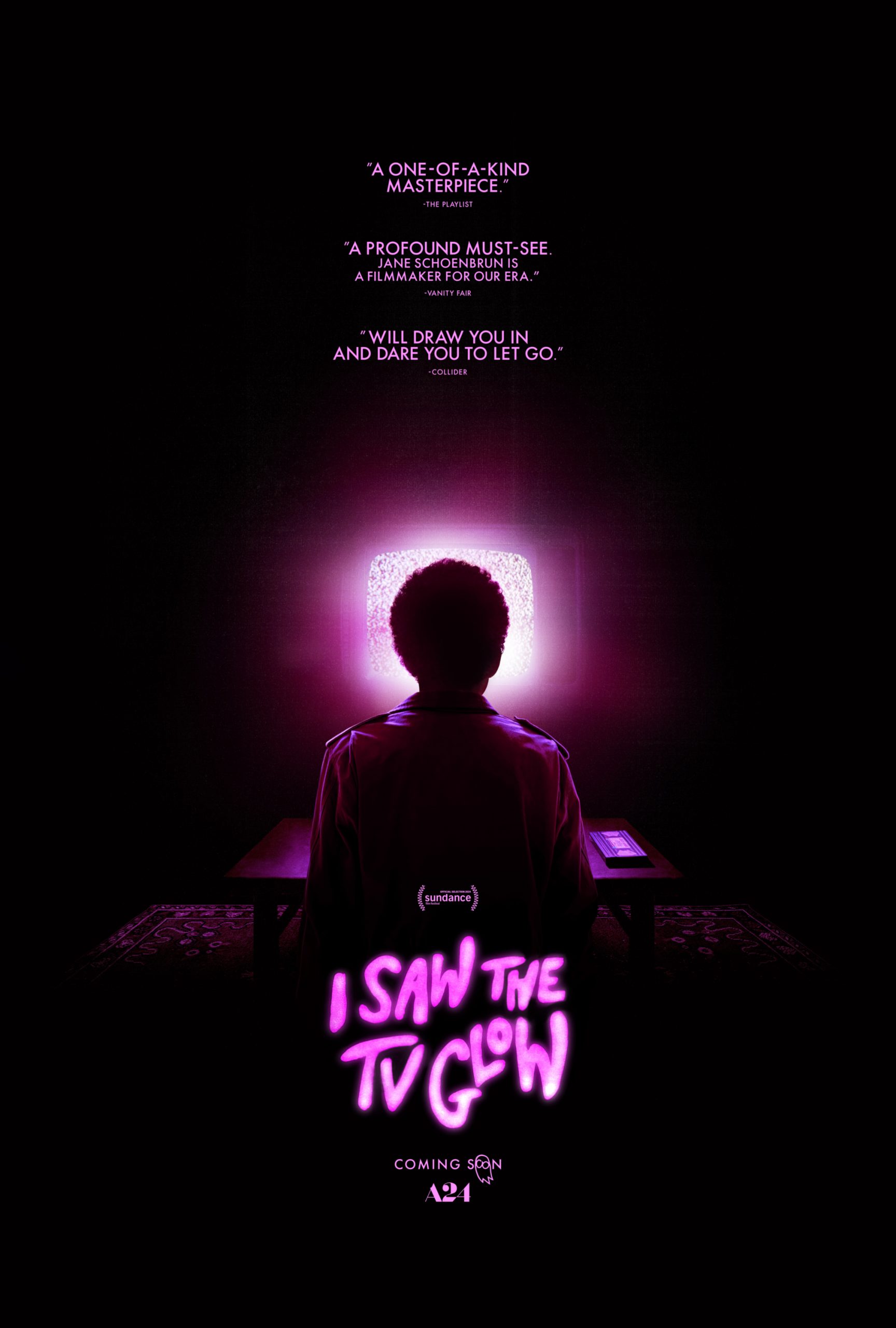Debuting at the Sundance Film Festival earlier this year, the critically acclaimed A24 film is a ’90s synth-wave horror movie from writer and director Jane Schoenbrun. The narrative is about teenagers Owen (Justice Smith) and Maddy (Brigette Lundy-Paine), who form a strange friendship over their shared obsession with the late-night TV show “The Pink Opaque.” “Black Mirror” meets “Stranger Things” as the story devolves, and the line between reality and TV becomes as grainy as a ’90s television set. “I Saw the TV Glow” is a film that fails due to its success in achieving every artistic whim.
Since the movie is a character piece, it only makes sense that the performances of the two leading actors are the most obvious pitfalls of the film’s artistic expression. Where movies like “The Room” or “Madame Web” feature performances that are so bad they are good, “I Saw the TV Glow” has performances reflecting the opposite. The interactions between the two characters are so awkward they are uncomfortable to watch—think Anakin and Padmé’s relationship in “Star Wars: Episode II-Attack of the Clones,” but worse. They say lines back and forth to each other in the most monotone expressions, followed by responses that are seconds too late, breaking the natural flow of how a conversation would typically go.
Nevertheless, these performances fit well with the context of the movie. Owen and Maddy are two isolated individuals who feel uncomfortable in their own bodies, and their social interactions mainly consist of watching a cheesy ’90s TV show; therefore, of course, the characters don’t know how to talk to people, because they never do it. The entire film exists in a world of static dialogue and awkward silences.
One final critique is about the dialogue. Schoenbrun really needed to limit the amount of times “The Pink Opaque” is mentioned throughout the film. While “The Pink Opaque” is the linchpin of the film, it does not need to be directly said whenever Owen or Maddy talk about it. There is one scene in particular where Maddy keeps saying “The Pink Opaque” for what seems like seven minutes straight; it gets annoying fast. If synonyms for “The Pink Opaque” were used, such as referring to “The Pink Opaque” as “it” or “the show” every once in a while, would have gone a long way to making the conversations less repetitive with wording.
Another major victim of artistic expression in this film is the way the passage of time is handled regarding Owen. The film opens with him in seventh grade, portrayed by the 12-year-old actor Ian Foreman. Eventually, the movie jumps two years ahead with Owen now depicted as a freshman in high school, played by Smith, who is clearly 30. The age gap between the actor and the character he portrays is the same reason people complain about Tobey Maguire’s Peter Parker in “Spider Man,” except Maguire was playing a senior in high school, not a freshman. Since Smith is a grown man acting like a kid half his age still asking mommy if he can stay up past his 10:30 p.m. bedtime, it creates a major disconnect between what the film wants the audience to believe and the obvious reality. This continues throughout the entire film as larger time jumps occur, and Owen still looks like a 30-year-old despite decades passing.
However, once audiences get past the halfway point of the film and the “Black Mirror” portion of the movie really takes effect, there is a subtle explanation for why this might be the case. While it doesn’t necessarily explain why he looks 30 instead of like a 15-year-old, later time jumps and aging processes, especially at the end of the film, do start to make some sense.
The last major note of issue about the movie is the ending. When “Inception” came out, audiences debated whether the protagonist, Cobb, truly made it out of the dream world. In the case of “Inception,” the cliffhanger ending only added to an incredibly satisfying film since the main objective had already paid off. “I Saw the TV Glow” attempts this in a much less satisfying way. The movie gets incredibly unsettling and goes off the rails in its final scenes as it seemingly begins to confirm a large part of the mystery set up earlier. Right when the movie feels as if it will reach its full potential and pay off what has been set up for the last 95 minutes, it just ends, leaving no satisfaction for the audience. The movie finally delivers on the promise of its created premise and decides to do nothing with it.
Similar to every other choice in this movie, it is incredibly intentional. In “I Saw the TV Glow,” “The Pink Opaque” gets abruptly canceled, ending on an unresolved cliffhanger that takes a certain toll on the lead characters. The decision to end the movie without a proper conclusion is a meta-commentary on the trauma caused when people get attached to something, only for it to be suddenly taken away. While the decision to give the audience a taste of how the characters are feeling is an inspired one, and done very well, it comes at the cost of delivering a satisfying film.
At the end of it all, “I Saw the TV Glow” executes every artistic choice masterfully, but those choices make for an unpleasant viewing experience. For audiences intrigued by these choices, the film will be at least a 4/5, but for everyone else, it will be no higher than a 1/5. This review gives it a 0.5/5.
—
Featured Image Image courtesy of A24

